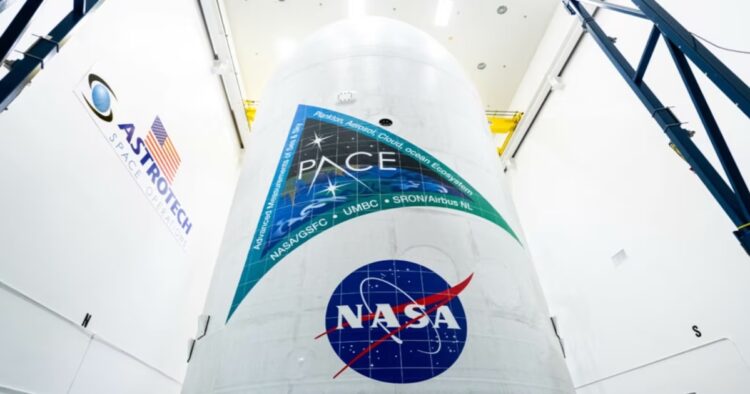NASA on Tuesday stated that it postponed the launch of its Plankton, Aerosal, Cloud, ocean Ecosystem mission today because of the unfavourable weather conditions.
Notably, the space agency and SpaceX plans to launch the mission at 12.03 PM IST on Wednesday. It was scheduled to launch on Tuesday but the launch will take place on Wednesday to accommodate the satellite’s orbit around the Earth.
Mission managers from @NASA, @Axiom_Space, and @SpaceX are standing down from Tuesday's #Ax3 undocking due to unfavorable weather conditions off the coast of Florida. https://t.co/SygipAMYLc
— International Space Station (@Space_Station) February 6, 2024
Significantly, the mission will be in a Sun-synchronous orbit which means that it will always be synced to the same position relative to the Sun. Consequently, it will cross Earth’s equator at the same local time for each orbit and also the angle at which the sun illuminates Earth will be consistent throughout each image it takes.
According to Scott Patano, it is ideal for Earth-observing satellites to have the Sun well overhead during observations. flight dynamics system development lead for PACE at NASA’s Goddard Space Flight Center in Greenbelt, Maryland.
Importantly, PACE would want the Sun to be behind it as it observed the Earth. Notably, if the Sun is exactly behind the satellite, it can cause reflections from the ocean, which is a less-than-ideal situation as the mission’s main aim is to collect data. It means that PACE will be slightly offset from the Sun.
Some satellites would launch into a temporary orbit before moving into their permanent orbits but not PACE. The NASA mission will be directly injected into its final orbit and it’s an effectively instantaneous launch, according to NASA.
As it will be launched from the south of Florida on the dark side of the Earth, it will be right in place on the Bharatiya subcontinent because it crosses the equator for the first time on the daylight side of Earth.

















Comments